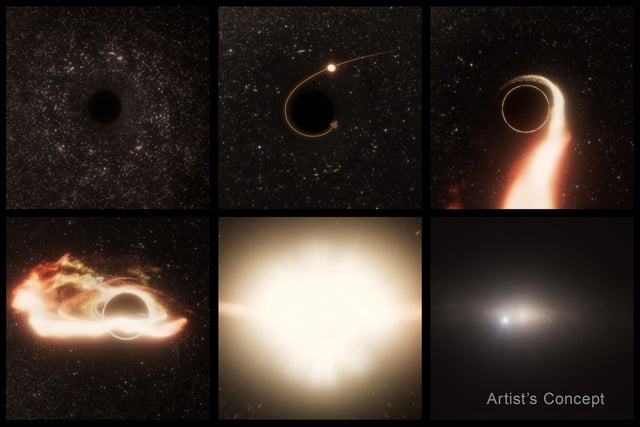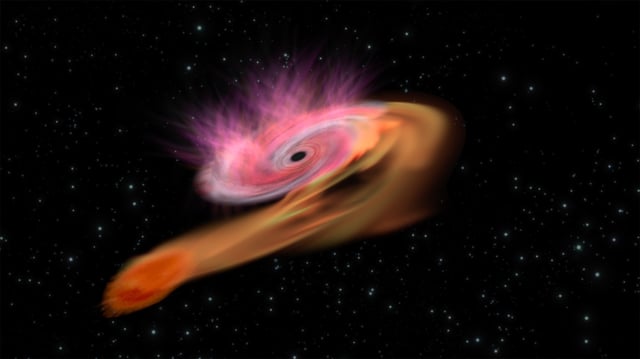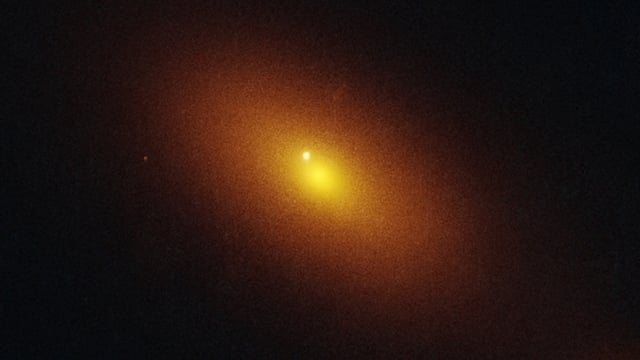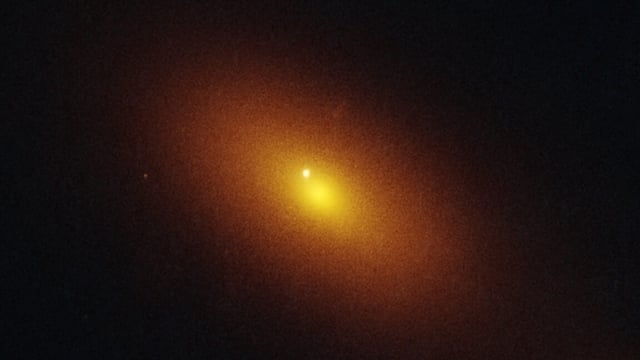Overview
- The tidal disruption event AT2024tvd revealed a supermassive black hole roaming 600 million light-years away, offset from its galaxy’s nucleus.
- This is the first recorded offset tidal disruption event among approximately 100 known cases, expanding the understanding of black hole behavior.
- The wandering black hole, with a mass of one million suns, coexists with a central black hole 100 times its size, yet they are not gravitationally bound.
- Multi-wavelength observations from Hubble, Chandra, and the Very Large Array confirmed the black hole’s off-center location and its star-shredding activity.
- The black hole’s displacement may result from a three-body gravitational interaction or a past galaxy merger, with further research ongoing to determine its origin.



